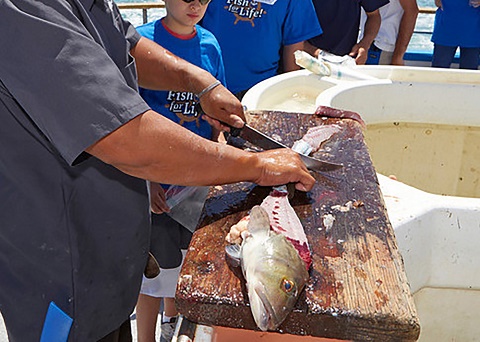Rock Crab Fishery extends open area
by CDFW
1-25-2017
Website
The California Department of Fish and Wildlife (CDFW) announced today that effective immediately the open area of the commercial rock crab fishery extends northward to Pillar Point, San Mateo County at the recommendation of state health agencies.
- On Jan. 25 the commercial rock crab fishery is open from 37° 30′ N. Lat. (Pillar Point San Mateo County) south to the California/Mexico border.
At the recommendation of the state Office of Environmental Health Hazard Assessment (OEHHA), CDFW Director Charlton H. Bonham submitted to the Office of Administrative Law an emergency rulemaking to close the commercial rock crab fishery north of Pigeon Point, San Mateo County. State and federal laws prohibit the commercial distribution of seafood products that contain domoic acid levels above the federal action level of 30 parts per million in the viscera. Because of this, on Nov. 8, OEHHA, in consultation with the California Department of Public Health (CDPH), recommended to CDFW to close the commercial rock crab fishery north of Pigeon Point. The recreational fishery for rock crab remains open statewide with a warning from CDPH to recreational anglers to avoid consuming the viscera of rock crab caught north of Pillar Point, San Mateo County.
Closure of the commercial rock crab fishery north of Pillar Point shall remain in effect until the Director of OEHHA, in consultation with the Director of CDPH, determines that domoic acid levels no longer pose a significant risk to public health and recommends the fishery be open. In the meantime, CDFW will continue to coordinate with CDPH and OEHHA to test domoic acid levels in rock crab within the closure area of the coast. CDPH, in conjunction with CDFW, has been actively testing crabs since early September and results from the most recent tests showed that rock crabs from Point Reyes had elevated levels of domoic acid in their viscera. Domoic acid is a potent neurotoxin that can accumulate in shellfish, other invertebrates and sometimes fish. It causes illness and sometimes death in a variety of birds and marine mammals that consume affected organisms. At low levels, domoic acid exposure can cause nausea, diarrhea and dizziness in humans. At higher levels, it can cause persistent short-term memory loss, seizures and can in some cases be fatal.
For more information:
Memo from Office of Environmental Health Hazard Assessment (1/25/2017)
wildlife.ca.gov/Fishing/Ocean/Health-Advisories
wildlife.ca.gov/crab
More Reports

1-23-2017
A painting of a pair of California quail has been chosen by a panel of judges as the winning entry...... Read More

1-20-2017
Question: As an alternative to traditional filleting, some people will do what they call “butterflying.” This is where fish are filleted...... Read More
